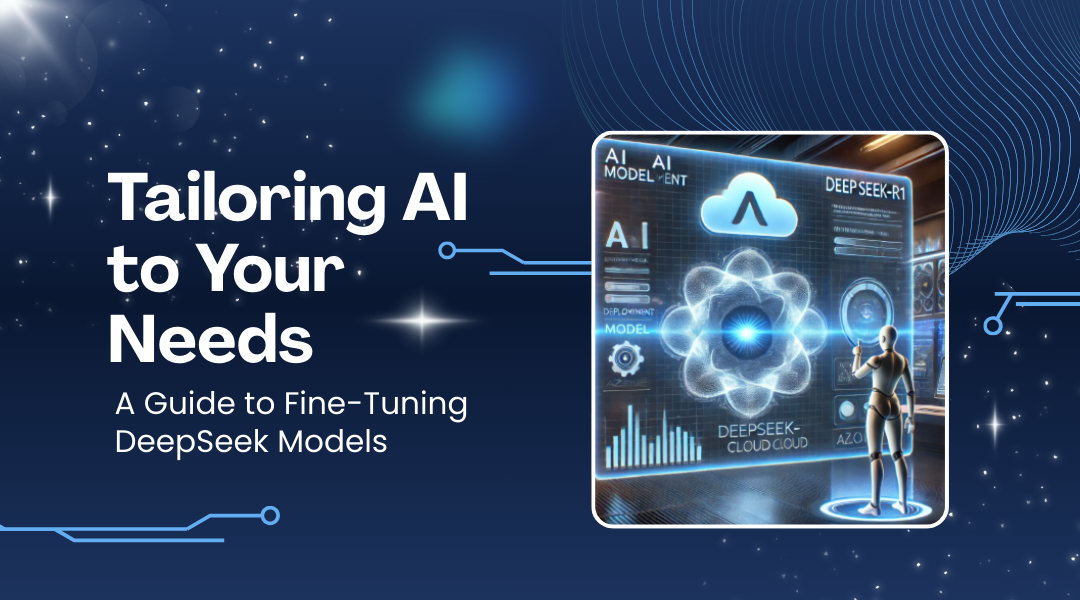You’ve probably heard the phrase “one size fits all”—but when it comes to AI, that’s rarely true. A model trained on general data might perform well in broad scenarios, but to really shine in specific tasks—like detecting manufacturing defects, diagnosing medical images, or understanding legal documents—it needs to be fine-tuned. This process adapts a pre-trained model to your unique data and objectives, making it more accurate, efficient, and relevant.
Why Fine-Tuning Matters
Fine-tuning isn’t just a technical step—it’s what transforms a generic model into a specialized tool. Here’s why it’s so important:
- Domain Adaptation
A model trained on everyday images might struggle with specialized visuals—like satellite imagery, microscopic cells, or historical manuscripts. Fine-tuning adjusts the model to recognize patterns specific to your field. - Task-Specific Optimization
Maybe you’re not just classifying images—you’re counting objects, detecting anomalies, or generating captions. Fine-tuning allows you to tailor the model’s architecture and weights to excel at your exact task. - Efficiency with Small Datasets
Training a model from scratch requires massive amounts of data. Fine-tuning lets you achieve great results with smaller, carefully curated datasets because the model already understands general features like edges, textures, and shapes.
Getting Started: Choosing the Right Model
DeepSeek offers a range of pre-trained models—each with different strengths. Your first task is to pick the right one:
- For image-related tasks, architectures like ResNet, EfficientNet, or Vision Transformers (ViT) are popular choices.
- If you’re working with text, consider BERT-based models or GPT-style architectures.
- For audio, look at models like Wav2Vec2 or HuBERT.
Choose a model that’s been pre-trained on data similar to yours. If you’re working with medical images, a model initially trained on natural images might still work, but one pre-trained on biomedical data could give you a head start.
Preparing Your Data
Fine-tuning relies heavily on high-quality, well-prepared data. Here’s how to set yourself up for success:
- Collect and Annotate
Gather a dataset that represents the real-world scenarios your model will face. Label it accurately—whether you’re classifying images, transcribing audio, or tagging text. - Preprocess
Format your data to match the input expectations of the pre-trained model. For images, this often means resizing to a specific resolution (e.g., 224×224 pixels) and normalizing pixel values. For text, you might need tokenization and padding. - Split Your Data
Divide your dataset into:
- Training set (~70-80%): Used to update the model’s weights.
- Validation set (~10-15%): Used to tune hyperparameters and avoid overfitting.
- Test set (~10-15%): Used for final evaluation.
The Fine-Tuning Process
Fine-tuning involves taking a pre-trained model and continuing its training on your custom data. Here’s a simplified outline:
- Load the Pre-Trained Model
Start with a model that’s already learned useful features from a large dataset. - Adjust the Output Layer
Modify the final layer to match the number of classes in your custom dataset. For example, if you’re classifying 10 types of industrial defects, the output layer should have 10 neurons. - Freeze Early Layers (Optional)
The early layers of a neural network typically learn general features (like edges or textures). You can freeze them to avoid overwriting this knowledge and only train the later layers. - Train on Your Data
Use a lower learning rate than in initial training—you’re refining, not rebuilding. - Validate and Iterate
Monitor performance on the validation set. If the model isn’t improving, try adjusting the learning rate, unfreezing more layers, or augmenting your data.
A Practical Example: Classifying Manufacturing Defects
Let’s say you work in manufacturing and want to automatically detect defects in products using images. Here’s how you might fine-tune a DeepSeek model:
python
import torch
import torchvision
from torchvision import transforms, datasets
from deepseek import models
# Load a pre-trained ResNet model
model = models.resnet50(pretrained=True)
# Replace the final layer for your 5 defect classes
num_ftrs = model.fc.in_features
model.fc = torch.nn.Linear(num_ftrs, 5)
# Define data transformations
data_transforms = transforms.Compose([
transforms.Resize(256),
transforms.CenterCrop(224),
transforms.ToTensor(),
transforms.Normalize([0.485, 0.456, 0.406], [0.229, 0.224, 0.225])
])
# Load your custom dataset
dataset = datasets.ImageFolder(‘path/to/your/data’, data_transforms)
dataloader = torch.utils.data.DataLoader(dataset, batch_size=32, shuffle=True)
# Set up loss and optimizer
criterion = torch.nn.CrossEntropyLoss()
optimizer = torch.optim.Adam(model.parameters(), lr=0.0001)
# Fine-tune the model
model.train()
for epoch in range(10):
for inputs, labels in dataloader:
optimizer.zero_grad()
outputs = model(inputs)
loss = criterion(outputs, labels)
loss.backward()
optimizer.step()
print(f’Epoch {epoch+1}, Loss: {loss.item()}’)
# Evaluate on your test set
# … (add evaluation code here)
This is a simplified example, but it captures the essence: load a pre-trained model, adapt it to your task, and train it on your data.
When Things Don’t Go as Planned
Fine-tuning doesn’t always work perfectly on the first try. Common issues and fixes:
- Overfitting: The model performs well on training data but poorly on new data. Solution: Use more data augmentation, add dropout, or reduce model complexity.
- Underfitting: The model isn’t learning enough. Solution: Unfreeze more layers or increase training time.
- Slow Convergence: Training is taking too long. Solution: Adjust the learning rate or try a different optimizer.
Conclusion: From Generic to Specific
Fine-tuning is where the real magic happens in AI customization. It’s the process that takes a powerful but general model and sharpens it into a precise tool for your specific needs.
Whether you’re building a system to detect diseases, analyze financial reports, or generate personalized content, fine-tuning lets you leverage the power of large-scale AI without starting from zero.
The key is to experiment—try different models, tweak hyperparameters, and iterate based on your results. With DeepSeek’s pre-trained models and a clear strategy, you can create AI solutions that aren’t just smart, but perfectly suited to your challenges.
